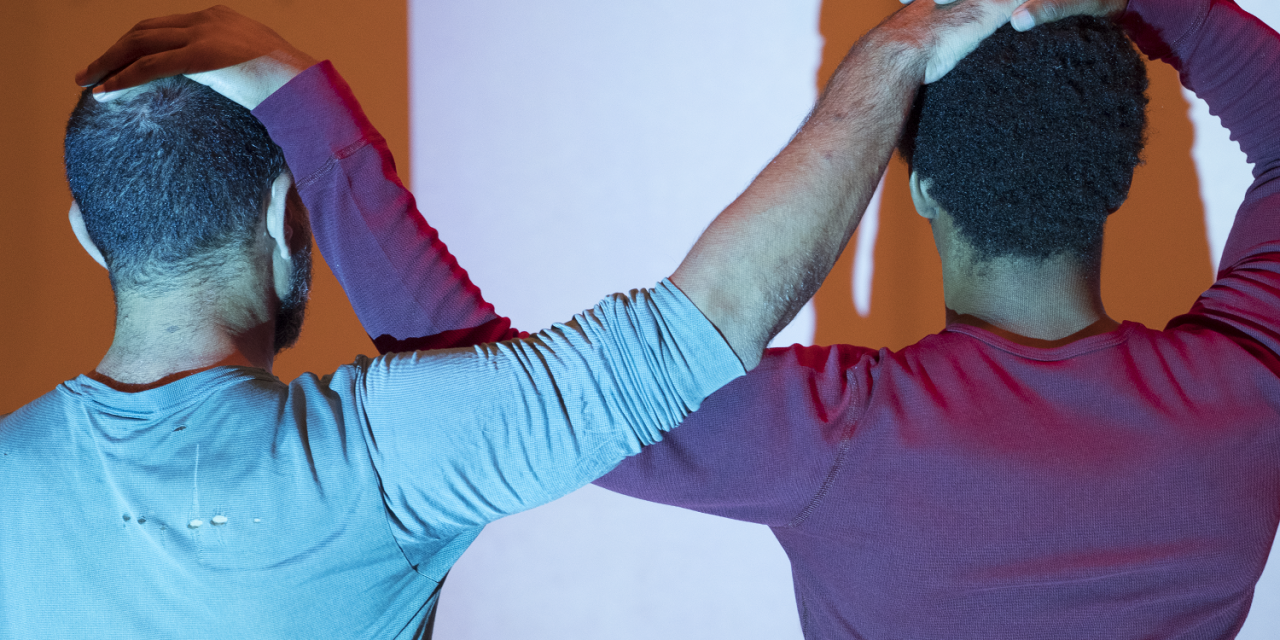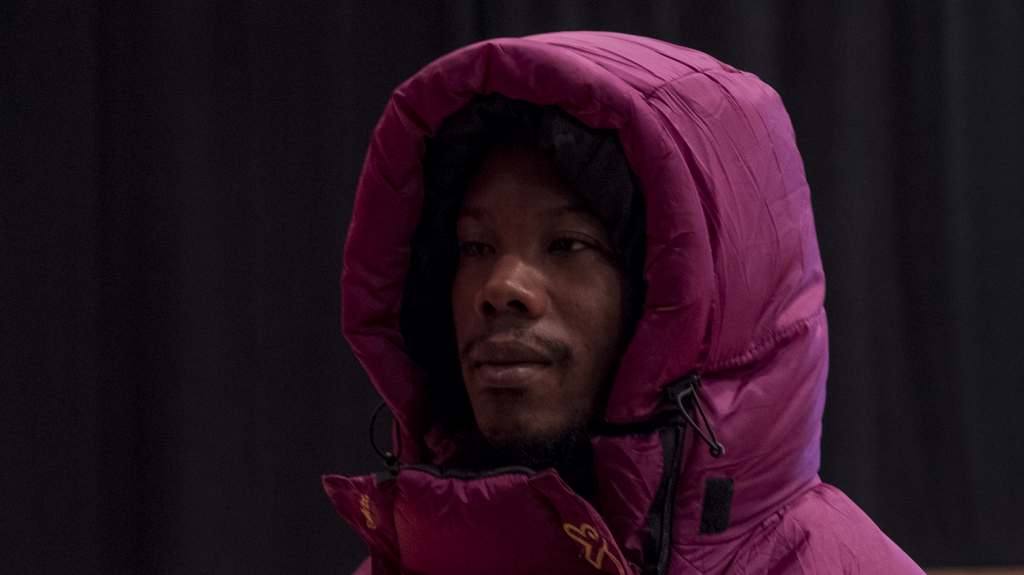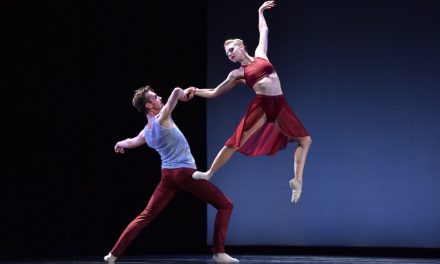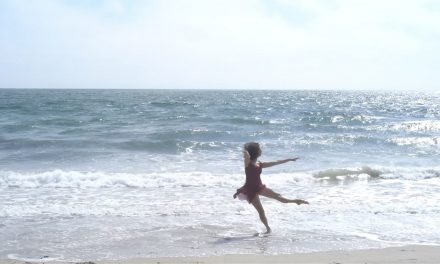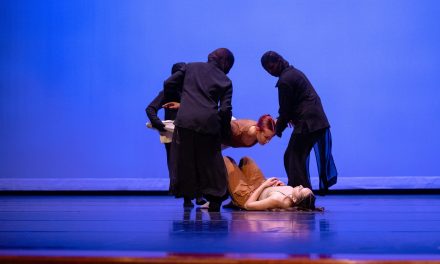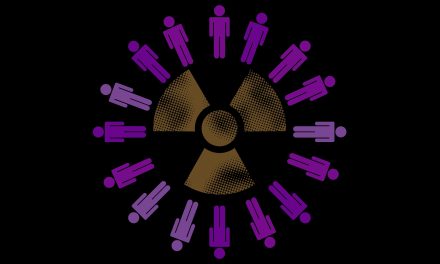Appearing March 8, 9 & 10, 2019 as part of The Theater Lab Series at the Getty Villa in Pacific Palisades, choreographer, performer and UCLA professor Lionel Popkin will present a full-evening, multi-media work titled The Oedipus/Antigone Project. Popkin was choreographer and director for the piece but worked closely with collaborators Barry Brannum, and Meena Murugesan.
Popkin performed with the companies of Trisha Brown, Terry Creach and Stephanie Skura, and from 1999-2000 he was a Choreographer-in-Residence at the Susan Hess Studio in Philadelphia, PA. Much of his training experience has therefore been in contact improvisation, partnering and release technique leading Popkin to become a certified teacher of Skinner Releasing Technique. Now a professor in the UCLA Department of World Arts and Culture/Dance, Popkin is currently on sabbatical leave providing the time to fully direct his attention to the creation of this evening length work.
Collaborators Barry Brannum is a choreographer, performer and MA/PhD student in UCLA’s World Arts & Cultures / Dance Department, and Meena Murugesan is a Los Angeles based experimental choreographer, performer, video artist, and arts educator raised in Montréal, Canada.
I spoke with Popkin and asked him what inspiration or series of events led him to create The Oedipus/Antigone Project. He said that there were primarily two things that lead him to creating this work. Much of his work for the past 15 years has been focused on what he labelled his “hybrid identity”. What it meant to be American and Asian, and to have multiple influences.” He began thinking about what it means to be in-between lands or seeing the world through the lens of a second-generation group of people. Popkin realizes that he is part of a larger political and artistic conversation about migration, immigration and what it means to be an American.
The Getty Villa’s collection focuses on Greece and Rome, and to be invited to appear on The Theater Lab Series requires that work presented relate to antiquities from one or both of those two countries. During a previous conversation, Popkin realized that there was perhaps a lost play between Oedipus the king of Thebes and Oedipus at Colonus where he died. Oedipus was a migrant during that period where he traveled with his daughter Antigone from Thebes to Colonus. This led Popkin to think about the anxiety created while living or existing between one’s homeland and the unfamiliar destination ahead. He described it as being an outcast between homelands or, in the case of Oedipus the king and Oedipus at Colonus, between plays.
“That fits for me.” Popkin said. “It gave me a narrative and a way to explore a body in the state of limbo.”
Reading the mythological tale of Oedipus through to the end of Antigone’s story, one realizes that all the main characters die or are brutally murdered. I asked Popkin if his work was as dark as the tale of Oedipus and Antigone.
“We end our narrative at the beginning of Oedipus at Colonus.” Popkin said. “We end with a ray of hope that wherever Oedipus dies, that place becomes blessed or important.” Popkin reminded me that it was Oedipus’s death at Colonus was the beginning of Athens being known as the Cradle of Western Civilization. With this positive explanation, Popkin said that The Oedipus/Antigone Project ends on the momentum of moving forward; that there is a place for someone who has been through such a difficult journey to call home.
“So much of what is happening in the piece moves back and forth between this current time and acting as a parable for that ancient moment.” Popkin stated. He feels that we are currently in a very dark place in America and with this work he is looking at the question of “is there a way out, and if so, how?”.
The team of The Oedipus/Antigone Project made site visits to the Getty Villa, but rehearsed in dance studios. They will, however, have a two-week residency at the Getty, giving them time to rehearse on stage and make any needed adjustments. It is a rare opportunity for most artists to have this quality pre-performance time in a theater. They will be performing in the 200 plus seat theater located behind the Getty Villa’s Amphitheater.
Popkin described Meena Murugesan’s role as somewhat of a watcher. She is a video designer, but her presence on stage is vast. When I suggested that Murugesan might be playing the part of a Greek chorus, Popkin answered that a Greek chorus creates context and provides comments, and that video can do all that and more. He went on to describe how Murugesan’s role might be considered the controller of the chorus and/or the chorus itself.
What Popkin loves about live performance, and the reason he still performs, is what the audience experiences while watching performers onstage. It is a physical response, he feels, more powerful than the that of viewing movement on television, video or the big screen. Popkin said what he was interested in was the “training of empathy”. It is a trait that is missing in much of today’s society.
There are three performers onstage during The Oedipus/Antigone Project, Popkin and Brannum comprising the main core duet. There is an original score by Los Angeles composer and sound designer Aaron Drake, lighting by scenic, and installation designer for new performance, theater, dance and opera Chris Kuhl. The costumes are by Los Angeles designer Marcus Kuiland-Nazarro.
The Oedipus/Antigone Project will have four performances at the Getty Villa; Friday, March 8th at 7:30pm, Saturday, March 9th at 3pm and 7:30pm, and Sunday, March 10th at 3pm.
TICKETS are $7 and on sale now. To purchase tickets, click here or by calling 310-440-7300. Please note, advance ticketing is required, as The Getty does not allow walk-up sales. For parking information, click here.
Featured image: The Oedipus/Antigone Project – Photo by Nicola Goode.

